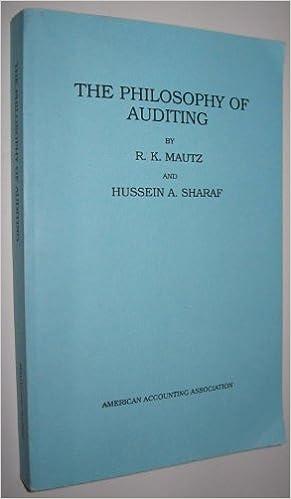Question
Cardinal Company is considering a project that would require a $2,975,000 investment in equipment with a useful life of five years. At the end of
Cardinal Company is considering a project that would require a $2,975,000 investment in equipment with a useful life of five years. At the end of five years, the project would terminate and the equipment would be sold for its salvage value of $300,000. The companys discount rate is 14%. The project would provide net operating income each year as follows:
Sales: 2735000
Variable Expenses: 1000000
CM: 1735000
Fixed Expenses:
Advertising, Slaries, and other fixed out of pocket costs: 735000
Depreciation 535000
Total Fixed Expenses: 1270000
Net Operating Income: 465000
3. What is the present value of the projects annual net cash inflows? (Use the appropriate table to determine the discount factor(s) and final answer to the nearest dollar amount.)
4. What is the present value of the equipments salvage value at the end of five years? (Use the appropriate table to determine the discount factor(s) and final answer to the nearest dollar amount.)
5. What is the projects net present value? (Use the appropriate table to determine the discount factor(s) and final answer to the nearest dollar amount.)
6. What is the project profitability index for this project? (Use the appropriate table to determine the discount factor(s) and final answer to 2 decimal places.)
7. What is the projects payback period? (Round your answer to 2 decimal places.)
8. What is the projects simple rate of return for each of the five years?
12. If the equipments salvage value was $500,000 instead of $300,000, what would be the projects simple rate of return?
13. Assume a postaudit showed that all estimates (including total sales) were exactly correct except for the variable expense ratio, which actually turned out to be 45%. What was the projects actual net present value?
14. Assume a postaudit showed that all estimates (including total sales) were exactly correct except for the variable expense ratio, which actually turned out to be 45%. What was the projects actual payback period?
15. Assume a postaudit showed that all estimates (including total sales) were exactly correct except for the variable expense ratio, which actually turned out to be 45%. What was the projects actual simple rate of return?
Step by Step Solution
There are 3 Steps involved in it
Step: 1

Get Instant Access to Expert-Tailored Solutions
See step-by-step solutions with expert insights and AI powered tools for academic success
Step: 2

Step: 3

Ace Your Homework with AI
Get the answers you need in no time with our AI-driven, step-by-step assistance
Get Started


